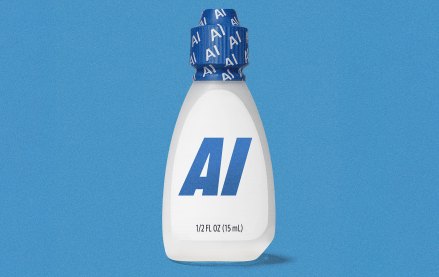FAO Schwarz, the 150-year-old toy retailer that closed its doors three years ago, is on a path to rebuild itself.
With a void left in the market following the fall of Toys “R” Us, FAO is betting that customers will be attracted to the nostalgia of the previously dead brand. To drive interest, the company has updated its retail experience to incorporate tech in-store, private label products that can’t be found outside FAO’s stores, and e-commerce. The company is also looking to expand beyond toys, looking to own the children’s products category through offerings that encompass wellness and apparel.
“We thought that FAO Schwarz can be a global kids lifestyle brand,” said David Conn, CEO of FAO Schwarz’s parent company ThreeSixty Brands, which acquired the brand in 2016. “We always believed it had a story to tell and authenticity; we always felt it could be much bigger than toys.”
In 2001, FAO Schwarz had 41 stores; it’s since gone through several owners in recent years, including a magazine publisher, a hedge fund, and from 2009 until its closing, Toys”R” Us. FAO Schwarz’s closure coincided with pressures its previous parent company was facing at the time, which pegged the closure on rising rents. But FAO faced challenges prior to that and claimed for bankruptcy twice before being acquired by Zany Brainy owner The Right Start in 2002. But despite industry pressures, Conn said what FAO had going for it was a strong consumer attachment to the brand — an asset ThreeSixty could use to scale the brand in a new way.
“People have a strong emotional connection to the brand; it has awareness outside of the U.S. — levels which surprised us. That’s the way we evaluated it,” he said.
To test a revival, Conn said ThreeSixty carried out a soft-launch of some of the FAO private-label products through other retailers in December 2017, including Neiman Marcus, Macy’s and the Hudson’s Bay Company in Canada. It also launched an online store around the same time, along with a limited product assortment on Amazon. The company reopened its first large-format store in Rockefeller Center in November of 2018. To drive traffic, it focused on interactive experiences in stores, supported by participatory events delivered by staff who perform character roles. For example, the company has doll-adoption ceremonies, with staff members who pose as nurses and doctors; customers are even given birth certificates, adding an element of theater to the experience. Children can use also use touch screens to put together remote-controlled cars. Apple’s tech tools are powering these experiences, and payments can be made through iPhones and iPads. FAO isn’t using virtual reality now, but Conn said other technology-driven experiential features will roll out soon.
FAO is expanding beyond its flagship and is rolling out smaller stores in airports, and through branded sections in larger retailers like Selfridges, which it plans to open in November. The company also plans to expand to China later this year. FAO’s stores, beyond its Rockefeller flagship, are run by partner companies.
According to Susan Cantor, CEO of branding agency Red Peak, FAO’s online-offline relaunch is the result of a detailed study of the failures of other toy retailers, particularly Toys “R” Us.
“One of the things that doomed Toys “R” Us was the package on the shelf that you couldn’t touch or feel or interact with — they have studied the failings of the toy industry and looked at the vulnerabilities of the Amazon experience,” she said. In addition, by co-locating alongside newer, upstart brands in airports, FAO is putting a fresh image on a dead brand.
While FAO’s products are still sold in other stores, Conn said the company will be expanding its FAO-exclusive product assortment available only in its stores and on its online marketplace. Expansion of its private-label brands is a key differentiator that could drive traffic back to its online and physical stores. The key risk the retailer faces is maintaining the investment necessary to scale, said digital marketing consultant Judge Graham.
“Their biggest risks to manage are the commitment to the investment — putting money into innovation and unique SKUs and rebuilding this brand as a destination store,” said Graham. “They’re becoming a toy tech business, and they have to stay steadfast with that.”
Photo credit: Richard Cadan
More in Marketing

In Graphic Detail: Why YouTube is a genuine threat to Netflix
Digiday has charted exactly how YouTube is a real threat to Netflix, due to its dominance of watch time, user base and its ability to totally reshape viewing behaviors.

At Ebiquity, a new role signals marketing’s shift from metrics to meaning
Marketing has no shortage of data. Ebiquity is betting on judgement.

Lowe’s wants to do more with AI shopping in 2026
Mylow, a shopping assistant powered by ChatGPT that launched in March, is already driving double the conversion rate for online shoppers.





